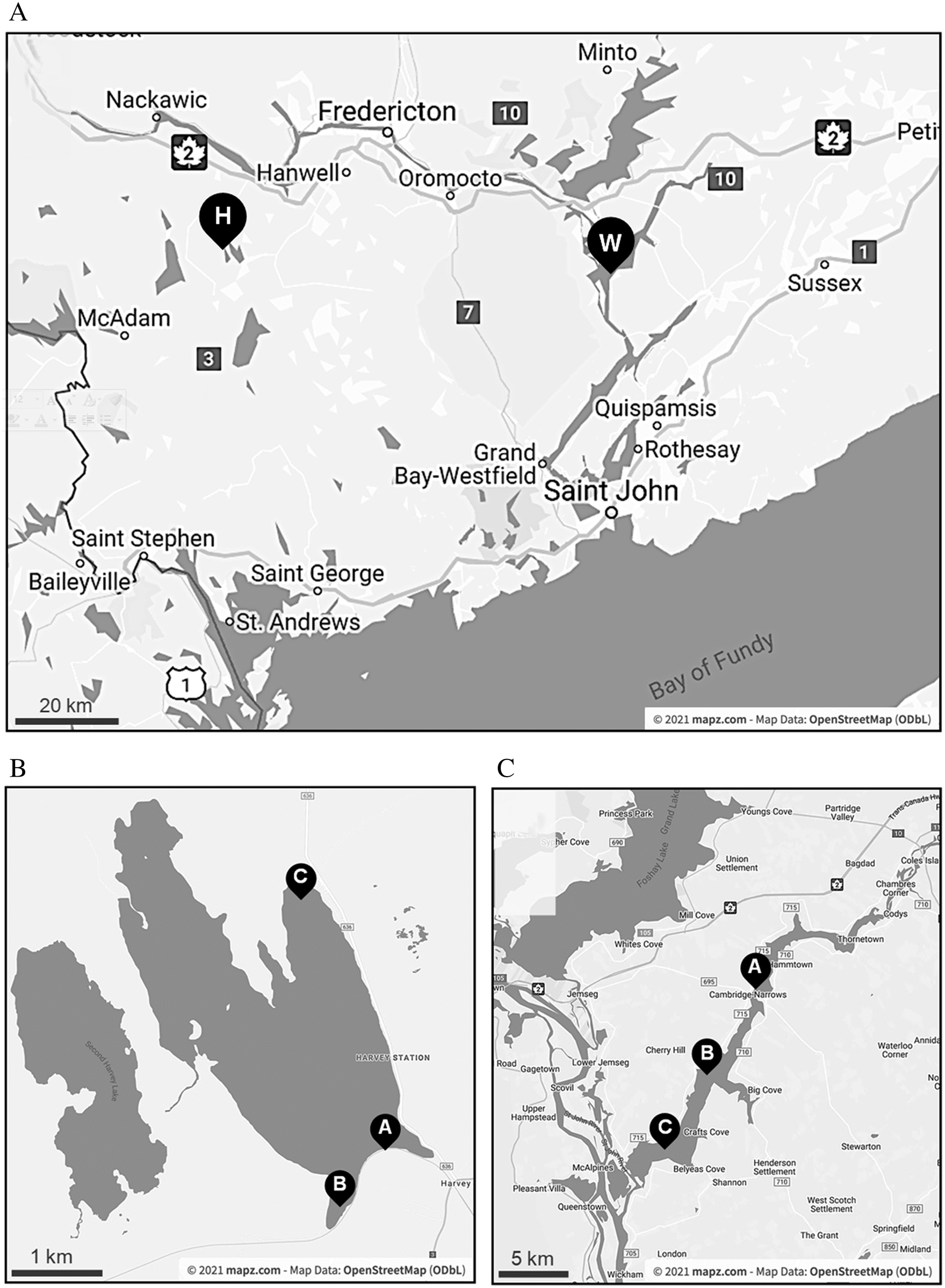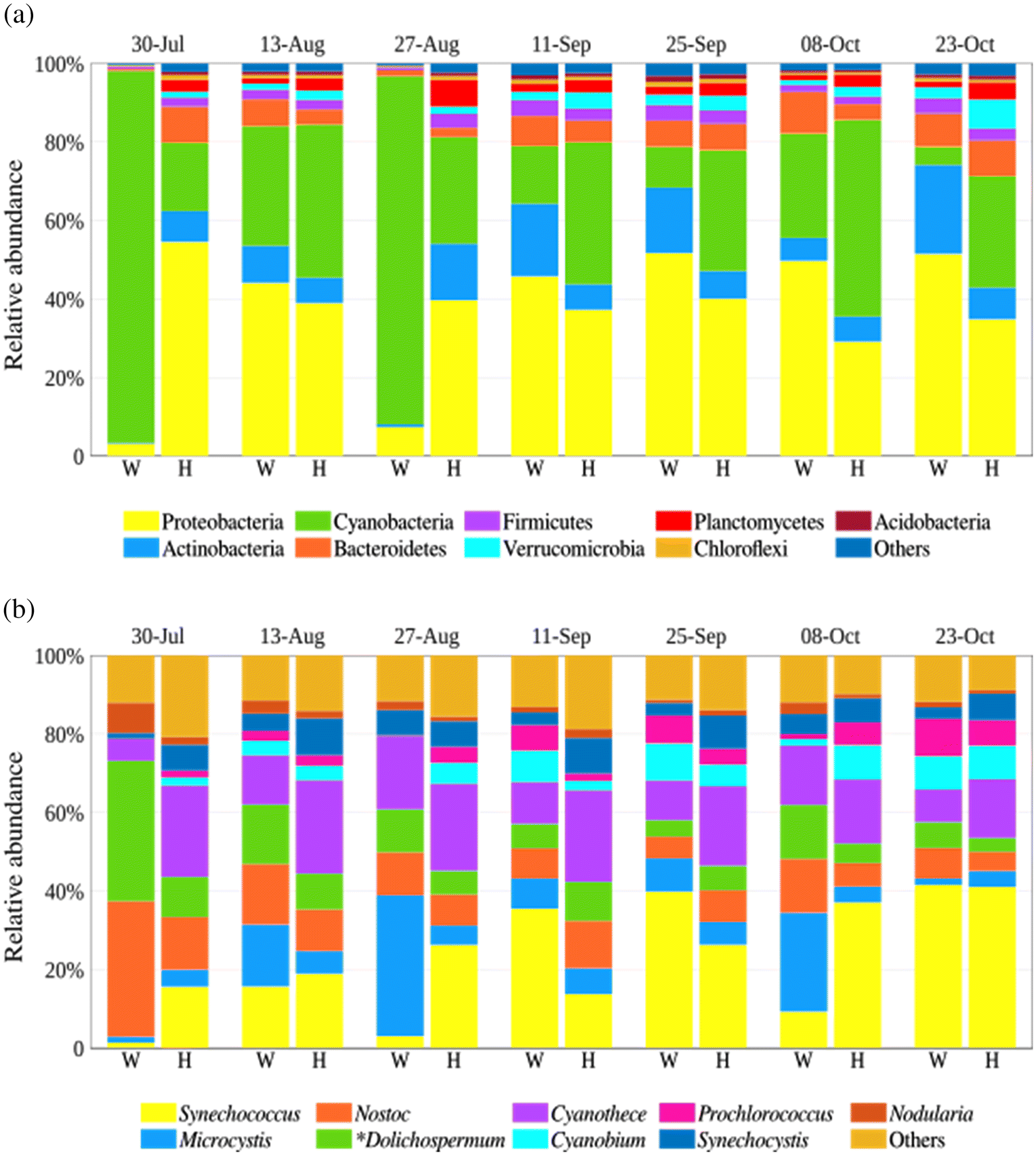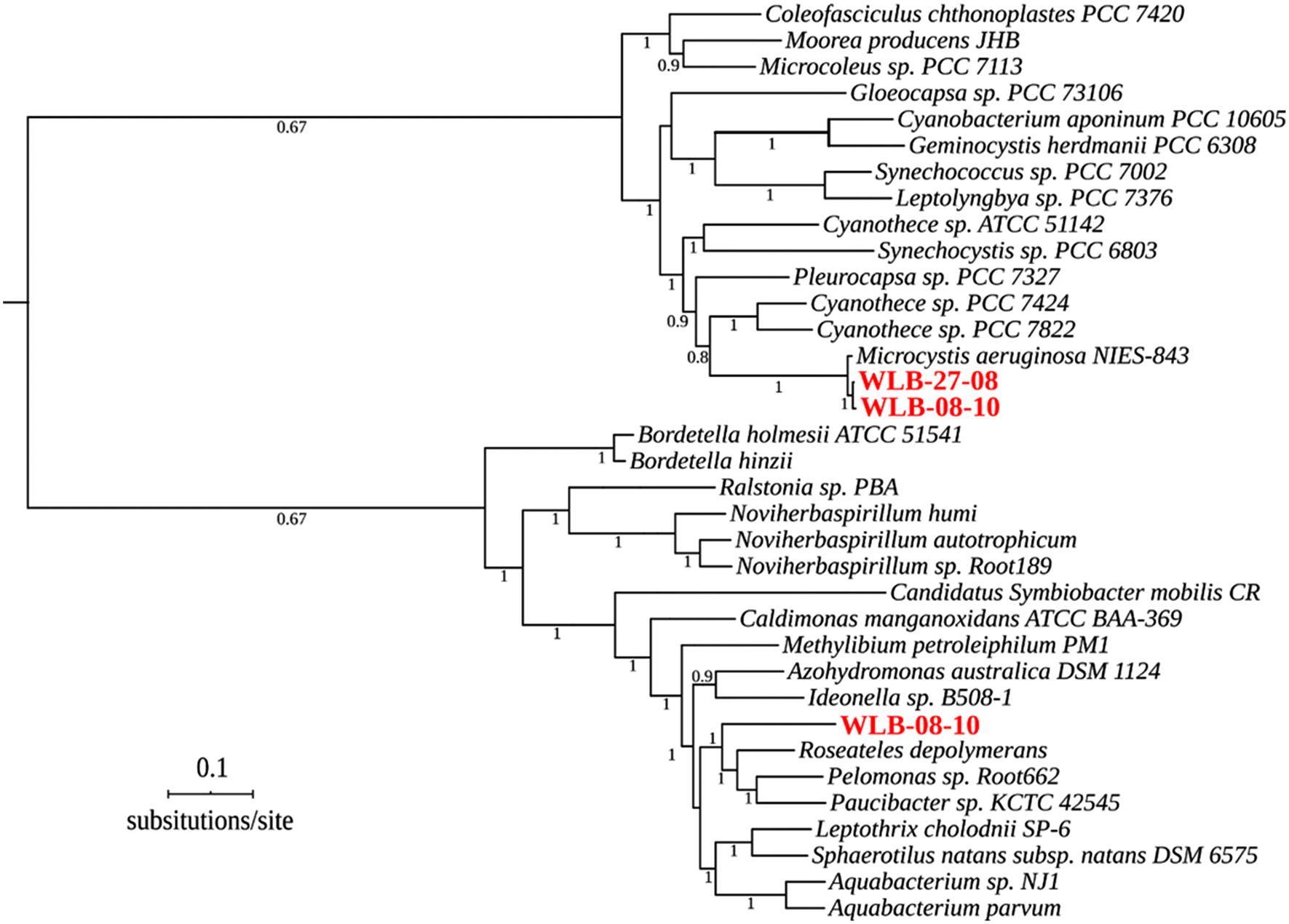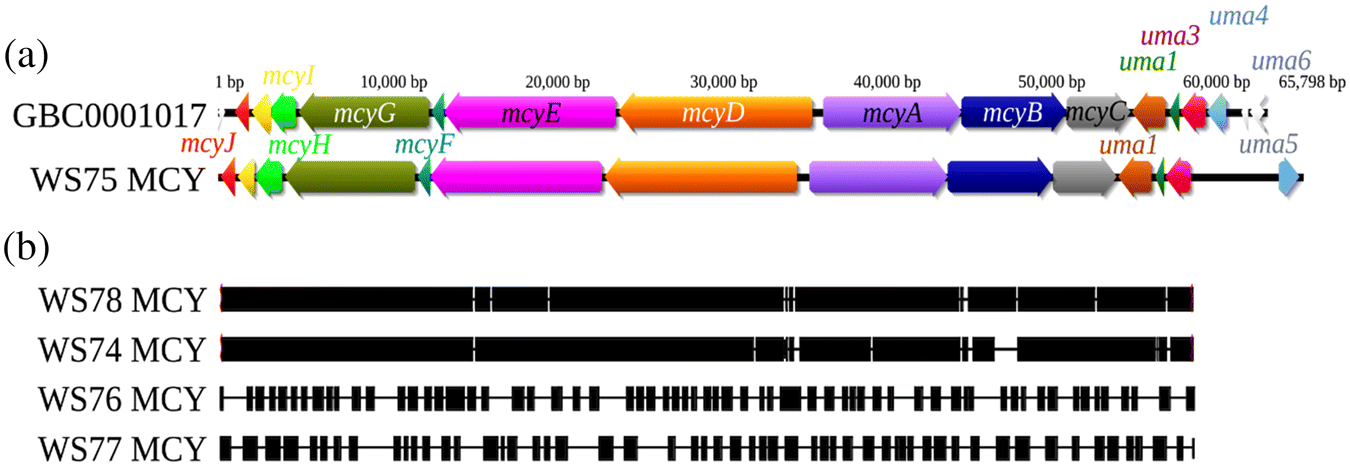Amplicon-based and metagenomic approaches provide insights into toxigenic potential in understudied Atlantic Canadian lakes
Abstract
Introduction
Materials and methods
Field sampling and processing

Culturing toxic strains for PCR controls
Detection of the microcystin synthetase E and anatoxin-a C genes
Shotgun sequencing of total DNA from environmental samples
Read annotation and community composition analysis
Read processing and assembly variants
Assembly and annotation of the genome of a microcystin-producing cyanobacteria from Washademoak Lake
Prediction of biosynthetic gene clusters in the Microcystis genome
Results
Field observations
Potential for cyanotoxin production: PCR detection of mcyE and anaC sequences
| Date | |||||||||
|---|---|---|---|---|---|---|---|---|---|
| Site | PCR Assay | 30.07 | 13.08 | 27.08 | 11.09 | 25.09 | 08.10 | 23.10 | 10.11 |
| Harvey Lake | |||||||||
| A | mcyE | + | − | − | + | + | + | + | − |
| Mic/Dol/Plank | +/−/− | +/−/− | +/−/− | +/−/− | +/−/− | ||||
| anaC | + | + | + | + | + | + | − | − | |
| B | mcyE | + | + | − | + | + | + | + | − |
| Mic/Dol/Plank | +/−/− | +/−/− | +/−/− | +/−/− | +/−/− | +/−/− | |||
| anaC | − | − | − | − | − | − | − | − | |
| C | mcyE | + | + | + | + | + | + | + | − |
| Mic/Dol/Plank | +/−/− | +/−/− | +/−/− | +/−/− | +/−/− | +/−/− | +/−/− | ||
| anaC | + | − | − | − | + | − | − | − | |
| Washademoak Lake | |||||||||
| A | mcyE | + | + | + | + | − | + | + | − |
| Mic/Dol/Plank | +/−/− | +/−/− | +/−/− | +/−/− | +/−/− | +/−/− | |||
| anaC | + | + | − | + | + | − | − | − | |
| B | mcyE | − | + | + | + | + | + | − | − |
| Mic/Dol/Plank | +/−/− | +/−/− | +/−/− | +/−/+ | +/−/− | ||||
| anaC | − | − | − | − | + | + | − | − | |
| C | mcyE | + | − | − | + | + | + | + | − |
| Mic/Dol/Plank | +/−/− | +/−/− | +/−/− | +/−/− | +/−/− | ||||
| anaC | + | − | − | − | + | + | + | − | |
The bacterial community of Washademoak and Harvey lakes

The genome of Microcystis aeruginosa WS75, a toxin-producing cyanobacterium from Washademoak Lake

| Features | M. aeruginosa WS75 (this study) | NIES-2549 | NIES-843 |
|---|---|---|---|
| Genome size (pb) | 4,891,847 | 4,301,200 | 5,842,795 |
| G+C content (%) | 42.4 | 42.92 | 42.3 |
| Total genes | 4,914 | 4,046 | 5,680 |
| RNA genes | 51 | 51 | 52 |
| CRISPR arrays | 3 | 4 | 3 |

MCY biosynthetic gene clusters from incomplete genome assemblies
Discussion
PCR detection of toxin-producing cyanobacteria
The microbial community composition of Washademoak and Harvey lakes
The genome of Microcystis aeruginosa WS75 from Washademoak Lake and its potential to produce bioactive metabolites
From detection to comparative metagenomics of toxin production cyanobacteria in Washademoak and Harvey lakes
References
Supplementary material
- Download
- 513.45 KB
Information & Authors
Information
Published In

History
Copyright
Data Availability Statement
Key Words
Sections
Subjects
Plain Language Summary
Authors
Author Contributions
Competing Interests
Metrics & Citations
Metrics
Other Metrics
Citations
Cite As
Export Citations
If you have the appropriate software installed, you can download article citation data to the citation manager of your choice. Simply select your manager software from the list below and click Download.
There are no citations for this item
